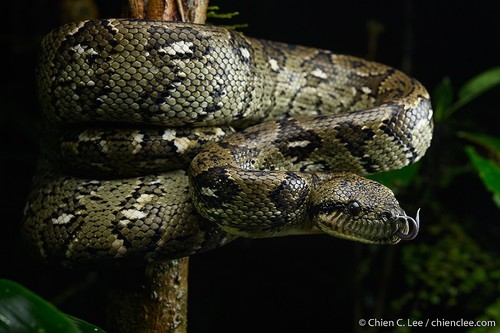
Madagascar Tree Boa
The Malagasy Tree Boa, with its vibrant green scales, thrives in Madagascar's lush forests. This nocturnal predator elegantly glides through the treetops, maintaining ecological balance by preying on birds and mammals. Its captivating iridescence and arboreal lifestyle make it a fascinating subject for both researchers and wildlife enthusiasts.
20 years
Lifespan
Length: 1.83 m
Size
Red, Green
Color
1-2 years
Age of Sexual Maturity
Low
Aggression
Least Concern
Conservation Status
Stable
Population Trend
Characteristics
Sanzinia madagascariensis, commonly known as the Malagasy Tree Boa, is a non-venomous snake endemic to Madagascar. Its striking green coloration with iridescent scales allows it to blend seamlessly into the canopy. Nocturnal and arboreal, it preys on birds and small mammals, playing a crucial role in controlling these populations.
Distribution Range of the Madagascar Tree Boa
Sanzinia madagascariensis, commonly known as the Madagascar tree boa, is native to the island of Madagascar. It is found throughout the island, with a distribution that includes both the eastern rainforests and the drier western regions.
Madagascar Tree Boa's Habitat
Environmental Conditions
The species inhabits a variety of environments, from the humid and dense rainforests of the eastern part of Madagascar to the drier, more open deciduous forests in the west. The climate in its habitat ranges from tropical and humid in the east to more seasonal and semi-arid in the west.
Ecological Niche
Sanzinia madagascariensis primarily occupies arboreal niches, where it is well adapted to living in trees. It is a nocturnal predator that feeds on birds, small mammals, and occasionally reptiles. The species shows a preference for areas with adequate cover and a good supply of prey, utilizing both natural and human-modified landscapes like plantations and secondary forests.
Copyright @ Nature Style Limited. All Rights Reserved.
 English
English